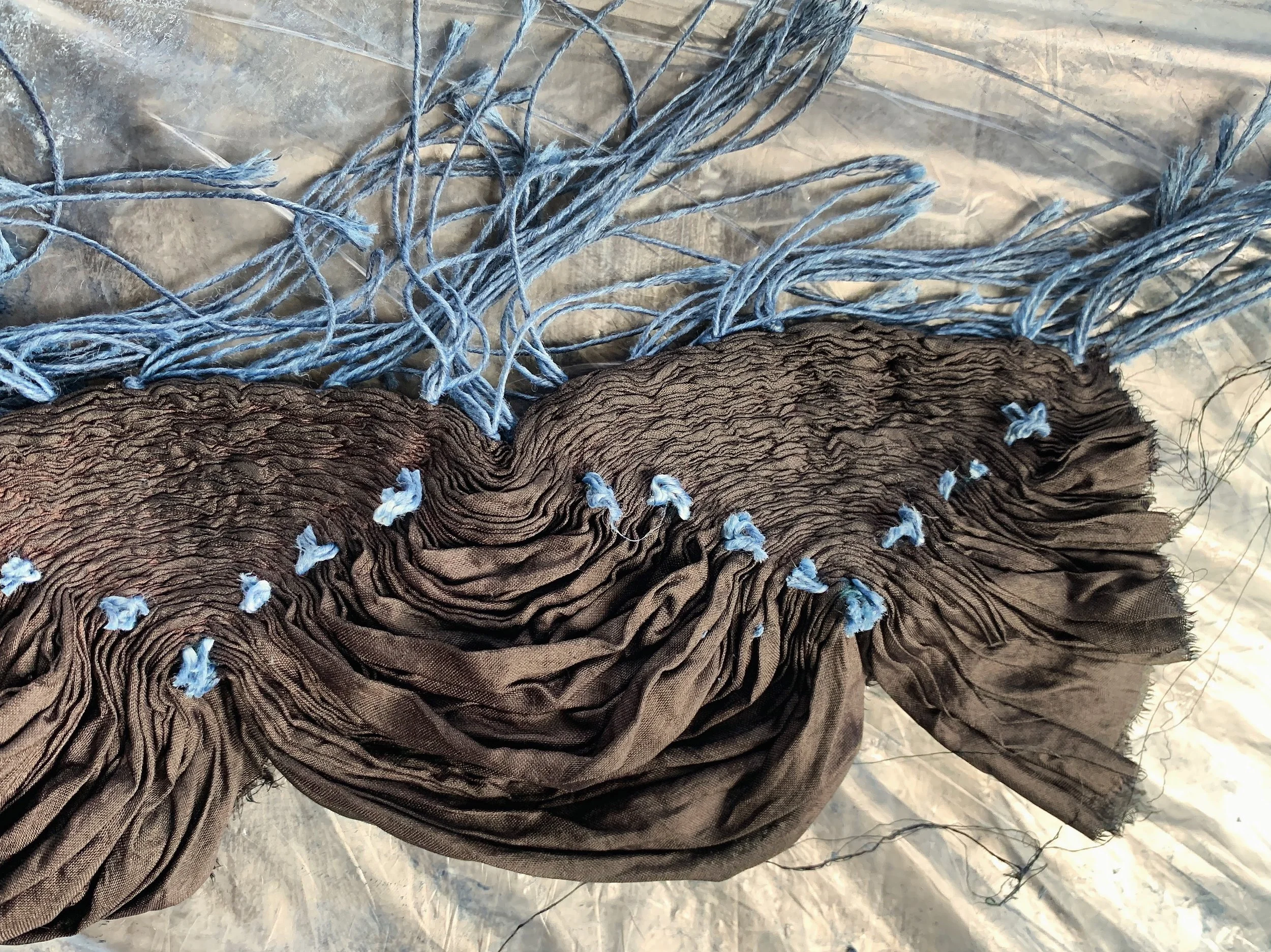Mission
Two luminous textile stories lie at the heart of Studio Nila. One is Bengal indigo—Indigofera tinctoria—a botanical blue that sparked one of South Asia’s earliest uprisings against colonial rule: the Indigo Rebellion of 1859. The other is Jamdani, a handwoven textile so fine it’s been called “woven air.” Derived from the Persian jam-e-dani, or “flower in a vase,” jamdani is one of the most intricate weaving techniques in the world, recognized by UNESCO as Intangible Cultural Heritage of Bangladesh. The term "Jamdani refers to a traditional handwoven fabric celebrated for its intricate motifs and sheer texture. While the term "Dhakai Jamdani" is often used to highlight the style that originated in Dhaka, Bangladesh—widely regarded as the birthplace and gold standard of the craft—it can also be a misnomer, sometimes used to dilute the true origins and credit of this heritage art form from Bangladesh.
At a time when Bangladesh is often viewed only through the lens of mass production, and in a time when indigenous stories are at great risk of erasure, Studio Nila offers a different story—one that centers care, craft, land and people.
Through research, storytelling, design collaborations, and pop-up presentations with textile libraries and artist studios across the U.S., Studio Nila seeks to elevate the textile heritage of Bangladesh and its living artisans.
Our work is informed by urban and rural traditions, folk, traditional, modern, retro and psychedelic aesthetics, inspired by illustration, photography, graphic design, street and riksha arts. Rooted in the rhythms of city, country, desert, sea and land, Studio Nila carries the story through woven air.

